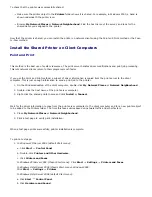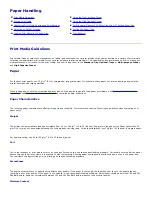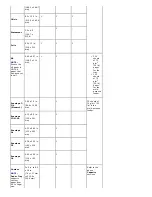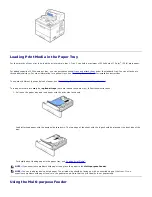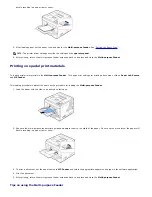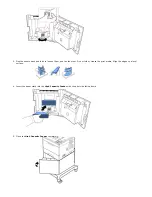
Labels
Your printer can print on many labels designed for use with laser printers. These labels are supplied in letter-, A4-, and legal-size sheets.
Label adhesives, face sheet (printable stock), and topcoats must be able to withstand temperatures up to 195° C (383° F) and pressure up to
25 pounds per square inch (psi). You can load one label sheet at a time in the
Multi-purpose Feeder
.
Try a sample of any label you are considering using with the printer before purchasing a large quantity:
Use full label sheets. Partial sheets may cause labels to peel off during printing, resulting in a jam. Partial sheets also contaminate your
printer and your cartridge with adhesive, and could void your printer and cartridge warranties.
Use labels that can withstand temperatures up to 195° C (383° F) without sealing, excessive curling, wrinkling, or releasing hazardous
emissions.
Do not print within 0.04 in. (1 mm) of the edge of the label, of the perforations, or between die-cuts of the label.
Do not use label sheets that have adhesive up to the edge of the sheet. We recommend zone coating of the adhesive at least 0.04 in.
(1 mm) away from edges. Adhesive material contaminates your printer and could void your warranty.
If zone coating of the adhesive is not possible,
a 0.125-in. (3-mm) strip should be removed on the leading and driver edge, and
replaced with a non-oozing adhesive.
Remove a 0.125-in. (3-mm) strip from the leading edge to prevent labels from peeling inside the printer.
Portrait orientation is preferred, especially when printing bar codes.
Do not use labels that have exposed adhesive.
Card Stock
Card stock is single ply and has a large array of properties, such as moisture content, thickness, and texture, that can significantly affect print
quality. See
"Identifying Print Media Sources and Specifications"
for information on the preferred weight and grain direction of print media.
Try a sample of any card stock you are considering using with the printer before purchasing a large quantity:
Be aware that preprinting, perforation, and creasing can significantly affect the print quality causing print media handling or jamming
problems.
Avoid using card stock that may release hazardous emissions when heated.
Do not use preprinted card stock manufactured with chemicals that may contaminate the printer. Preprinting introduces semi-liquid and
volatile components into the printer.
We recommend the use of long grain card stock.
Storing Print Media
Use the following guidelines for proper print media storage. These help avoid print media feeding problems and uneven print quality:
For best results, store print media in an environment where the temperature is approximately 21° C (70° F) and the relative humidity is
40%.
Store cartons of print media on a pallet or shelf, rather than directly on the floor.






